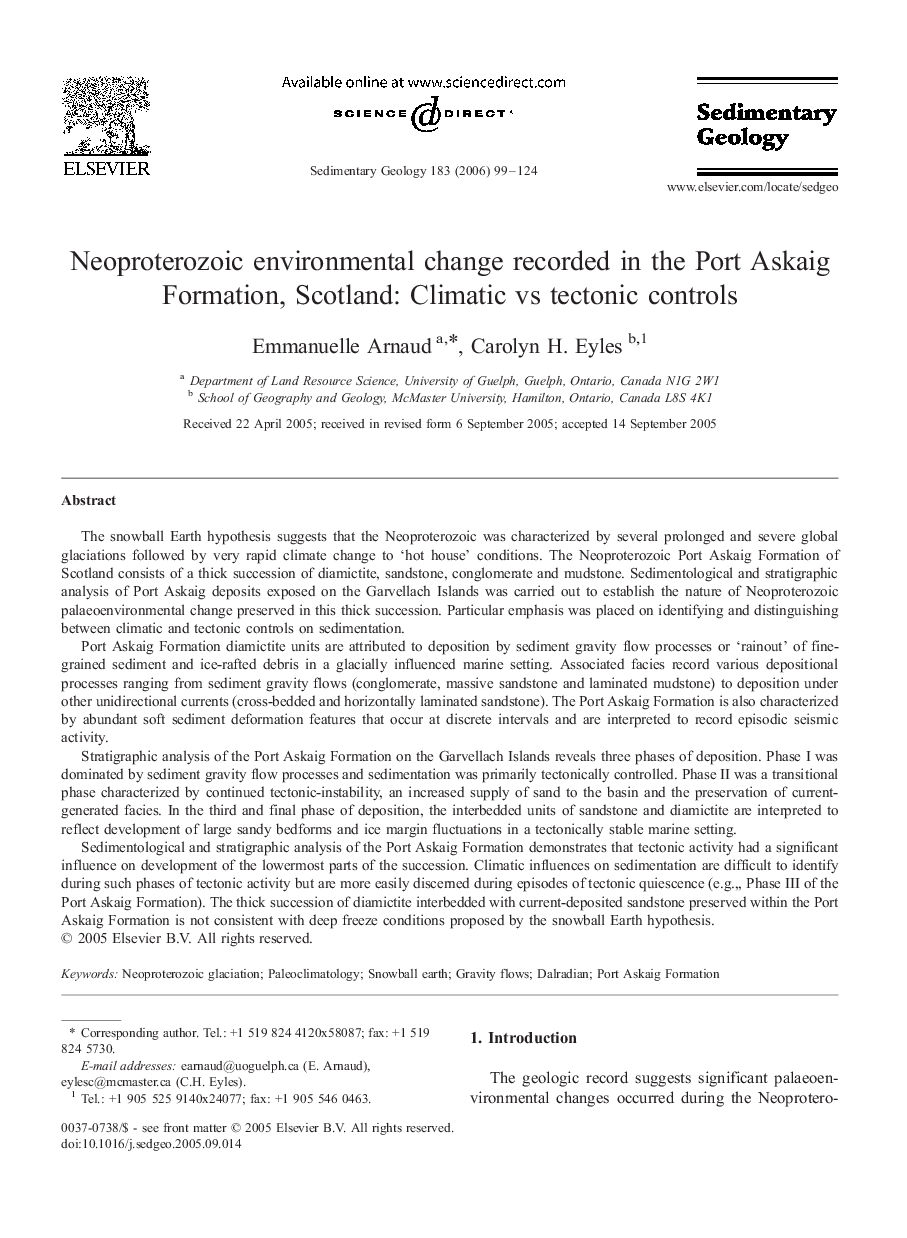| کد مقاله | کد نشریه | سال انتشار | مقاله انگلیسی | نسخه تمام متن |
|---|---|---|---|---|
| 4691137 | 1636194 | 2006 | 26 صفحه PDF | دانلود رایگان |

The snowball Earth hypothesis suggests that the Neoproterozoic was characterized by several prolonged and severe global glaciations followed by very rapid climate change to ‘hot house’ conditions. The Neoproterozoic Port Askaig Formation of Scotland consists of a thick succession of diamictite, sandstone, conglomerate and mudstone. Sedimentological and stratigraphic analysis of Port Askaig deposits exposed on the Garvellach Islands was carried out to establish the nature of Neoproterozoic palaeoenvironmental change preserved in this thick succession. Particular emphasis was placed on identifying and distinguishing between climatic and tectonic controls on sedimentation.Port Askaig Formation diamictite units are attributed to deposition by sediment gravity flow processes or ‘rainout’ of fine-grained sediment and ice-rafted debris in a glacially influenced marine setting. Associated facies record various depositional processes ranging from sediment gravity flows (conglomerate, massive sandstone and laminated mudstone) to deposition under other unidirectional currents (cross-bedded and horizontally laminated sandstone). The Port Askaig Formation is also characterized by abundant soft sediment deformation features that occur at discrete intervals and are interpreted to record episodic seismic activity.Stratigraphic analysis of the Port Askaig Formation on the Garvellach Islands reveals three phases of deposition. Phase I was dominated by sediment gravity flow processes and sedimentation was primarily tectonically controlled. Phase II was a transitional phase characterized by continued tectonic-instability, an increased supply of sand to the basin and the preservation of current-generated facies. In the third and final phase of deposition, the interbedded units of sandstone and diamictite are interpreted to reflect development of large sandy bedforms and ice margin fluctuations in a tectonically stable marine setting.Sedimentological and stratigraphic analysis of the Port Askaig Formation demonstrates that tectonic activity had a significant influence on development of the lowermost parts of the succession. Climatic influences on sedimentation are difficult to identify during such phases of tectonic activity but are more easily discerned during episodes of tectonic quiescence (e.g.,, Phase III of the Port Askaig Formation). The thick succession of diamictite interbedded with current-deposited sandstone preserved within the Port Askaig Formation is not consistent with deep freeze conditions proposed by the snowball Earth hypothesis.
Journal: Sedimentary Geology - Volume 183, Issues 1–2, 1 January 2006, Pages 99–124